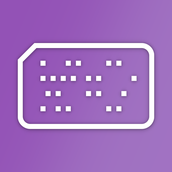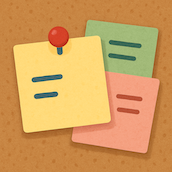Firebase(파이어베이스)를 이용한 iOS 로그인 구현 방법입니다.
이 예제에서는 이메일을 아이디로 사용합니다. 먼저 Firebase 웹 콘솔에서 인증 메뉴를 활성화한 다음, Xcode에서 로그인 관련 내용을 구현합니다.
파이어베이스 프로젝트에서 Authentification 생성
1. 파이어베이스 콘솔에서 프로젝트를 생성한 후, 빌드 > Authentification 메뉴를 클릭합니다.
2. 시작하기 버튼을 클릭합니다.

3. 그러면 아래와 같이 로그인 제공업체라는 페이지가 뜨게 되는데 여기서 이메일/비밀번호 옆의 연필 모양의 버튼을 클릭합니다.

만약 메뉴가 뜨지 않는다면 Sign-in method 탭을 클릭하면 됩니다.
4. 사용 설정 스위치를 활성화시키고, 저장 버튼을 클릭합니다.

5. 회원이 로그인을 하려면 먼저 회원 가입 과정이 필요하지만, 편의상 콘솔에서 사용자를 생성 후 로그인/로그아웃이 먼저 구현되도록 하겠습니다.
Users 탭에서 사용자 추가 버튼을 클릭합니다.

6. 임의의 이메일 주소, 비밀번호를 입력한 후 사용자 추가 버튼을 클릭합니다.

사용자가 추가되었습니다.

프로젝트에 Firebase CocoaPods 설치
Firebase는 CocoaPods라는 디펜던시 관리자를 이용해 프로젝트 내에 설치해야 합니다.
1. CocoaPods가 설치되지 않았다면 터미널 실행 후 아래 커맨드를 이용해 설치합니다.
$ sudo gem install cocoapods
2. 터미널을 실행한 뒤, Xcode 프로젝트의 루트 폴더로 이동한 다음, CocoaPods 초기화를 진행합니다.
$ pod init
3. 초기화가 완료되면, 프로젝트 루트 폴더에 Podfile이라는 파일이 생성됩니다. 텍스트 편집기로 해당 파일을 연 뒤, 아래 하이라이트 부분을 추가합니다.
# Uncomment the next line to define a global platform for your project
# platform :ios, '9.0'
target 'ExampleProject' do
# Comment the next line if you don't want to use dynamic frameworks
use_frameworks!
# Pods for ExampleProject
# add the Firebase pod for Google Analytics
pod 'Firebase/Analytics'
# or pod ‘Firebase/AnalyticsWithoutAdIdSupport’
# for Analytics without IDFA collection capability
# add pods for any other desired Firebase products
# https://firebase.google.com/docs/ios/setup#available-pods
# Add the pods for any other Firebase products you want to use in your app
# For example, to use Firebase Authentication and Cloud Firestore
pod 'Firebase/Auth'
pod 'Firebase/Firestore'
pod 'Firebase/Database'
target 'ExampleProjectTests' do
inherit! :search_paths
# Pods for testing
end
target 'ExampleProjectUITests' do
# Pods for testing
end
end
4. 터미널로 돌아간 뒤, 프로젝트 루트 위치에서 아래 명령을 실행합니다.
$ pod install
5. 설치가 완료되면 프로젝트 루트 폴더에 [프로젝트명].xcworkspace 라는 파일이 생성됩니다. 이후 프로젝트의 모든 작업은 워크스페이스를 통해 진행해야 합니다.
6. 프로젝트의 AppDelegate.swift 파일에서 아래 하이라이트 부분을 추가합니다.
import UIKit
import Firebase
@main
class AppDelegate: UIResponder, UIApplicationDelegate {
func application(_ application: UIApplication, didFinishLaunchingWithOptions launchOptions: [UIApplication.LaunchOptionsKey: Any]?) -> Bool {
// Override point for customization after application launch.
FirebaseApp.configure()
return true
}
로그인/로그아웃 구현 (Swift, Storyboard)
1. 스토리보드에서 이메일과 패스워드 입력을 받는 간단한 로그인 폼을 구현합니다.
아래 뷰 컨트롤러에서 회색 배경의 두 하위 UIView가 있습니다. 로그인이 되지 않은 상태라면 위의 로그인 폼(viewSignInForm)만 보여주고, 로그인이 되었다면 아래 사용자 정보 뷰(viewUserInfo)만 보여줍니다.
오브젝트 배치 및 @IBOutlet, @IBAction 연결에 대한 내용은 너무 길어 생략합니다.

2. 뷰 컨트롤러에 Firebase를 import 합니다.
import Firebase
3. 이메일과 비밀번호를 입력 후 로그인 버튼을 누르면 로그인 작업을 실행하는 코드를 작성합니다.
@IBAction func btnActSubmit(_ sender: UIButton) {
guard let userEmail = txtUserEmail.text else { return }
guard let userPassword = txtUserPassword.text else { return }
Auth.auth().signIn(withEmail: userEmail, password: userPassword) { [weak self] authResult, error in
guard self != nil else { return }
if authResult != nil {
print("로그인 되었습니다")
} else {
print("로그인되지 않았습니다.", error?.localizedDescription ?? "")
}
}
}
userEmail,userPassword– 텍스트 필드에서 이메일 주소, 비밀번호를 가져옵니다.Auth.auth().signIn– 이메일과 비밀번호를 받은 뒤, 트레일링 클로저에서 로그인 완료 시 실행할 내용을 작성합니다.authResult,error– 로그인이 정상적으로 진행되었다면authResult가nil이 아니며, 로그인이 실패한 경우authResult가nil이 됩니다. 로그인이 되지 않은 이유를error?.localizedDescription를 통해 알 수 있습니다.
앱을 빌드-실행한 뒤 위에서 생성했던 유저 정보를 이용해 로그인을 진행합니다. 로그인 성공 또는 실패시 해당 메시지가 표시됩니다.
4. viewWillAppear(_:)에 인증 상태 리스너 작성
인증 상태 리스너는 로그인/로그아웃이 되었을 때 즉시 반응해서 클로저의 내용을 실행합니다.
먼저 하위 뷰 2개를 모두 isHidden 처리하여 숨깁니다.
viewSignUpForm.isHidden = true viewUserInfo.isHidden = true
뷰 컨트롤러의 멤버 변수 handle을 생성합니다.
var handle: AuthStateDidChangeListenerHandle!
다음 viewWillAppear(_:) 에 인증 상태 리스너를 작성합니다.
override func viewWillAppear(_ animated: Bool) {
handle = Auth.auth().addStateDidChangeListener { auth, user in
if let user = user {
self.viewUserInfo.isHidden = false
self.viewSignUpForm.isHidden = true
self.lblUserEmail.text = user.email
} else {
self.viewUserInfo.isHidden = true
self.viewSignUpForm.isHidden = false
self.lblUserEmail.text = ""
}
}
}
user가nil이 아니면 로그인이 된 상태이고,nil이라면 로그인이 되지 않은 상태입니다.- 로그인이 된 경우 이메일을 가져와 레이블에 기록하고, 로그인창은 숨기고, 사용자 정보 창은 보여줍니다.
- 로그인이 되지 않은 경우 이메일 레이블을 초기화하고, 로그인창을 표시하고, 사용자 정보 창은 숨깁니다.
뷰가 사라질 때에는 인증 상태 리스너를 해지해야 합니다. viewWillDisappear(_:) 을 아래와 같이 작성합니다.
override func viewWillDisappear(_ animated: Bool) {
Auth.auth().removeStateDidChangeListener(handle!)
}
5. 로그아웃 버튼에 로그아웃 이벤트를 작성합니다.
@IBAction func btnActSignOut(_ sender: UIButton) {
do {
try Auth.auth().signOut()
} catch {
print(error.localizedDescription)
}
}
로그아웃이 완료되면 위의 인증 상태 리스너에 의해 사용자 정보 창이 가려지고 로그인 폼이 다시 나타나게 됩니다.
참고로 한 번 로그인이 되면 앱을 삭제하기 전까지는 계속 로그인 상태가 유지됩니다.
전체 코드
import UIKit
import Firebase
class ViewController: UIViewController {
@IBOutlet weak var txtUserEmail: UITextField!
@IBOutlet weak var txtUserPassword: UITextField!
@IBOutlet weak var lblUserEmail: UILabel!
@IBOutlet weak var viewSignUpForm: UIView!
@IBOutlet weak var viewUserInfo: UIView!
var handle: AuthStateDidChangeListenerHandle!
override func viewDidLoad() {
super.viewDidLoad()
viewSignUpForm.isHidden = true
viewUserInfo.isHidden = true
}
override func viewWillAppear(_ animated: Bool) {
handle = Auth.auth().addStateDidChangeListener { auth, user in
if let user = user {
self.viewUserInfo.isHidden = false
self.viewSignUpForm.isHidden = true
self.lblUserEmail.text = user.email
} else {
self.viewUserInfo.isHidden = true
self.viewSignUpForm.isHidden = false
self.lblUserEmail.text = ""
}
}
}
override func viewWillDisappear(_ animated: Bool) {
Auth.auth().removeStateDidChangeListener(handle!)
}
@IBAction func btnActSubmit(_ sender: UIButton) {
guard let userEmail = txtUserEmail.text else { return }
guard let userPassword = txtUserPassword.text else { return }
Auth.auth().signIn(withEmail: userEmail, password: userPassword) { [weak self] authResult, error in
guard self != nil else { return }
if authResult != nil {
print("로그인 되었습니다")
} else {
print("로그인되지 않았습니다.", error?.localizedDescription ?? "")
}
}
}
@IBAction func btnActSignOut(_ sender: UIButton) {
do {
try Auth.auth().signOut()
} catch {
print(error.localizedDescription)
}
}
}





0개의 댓글